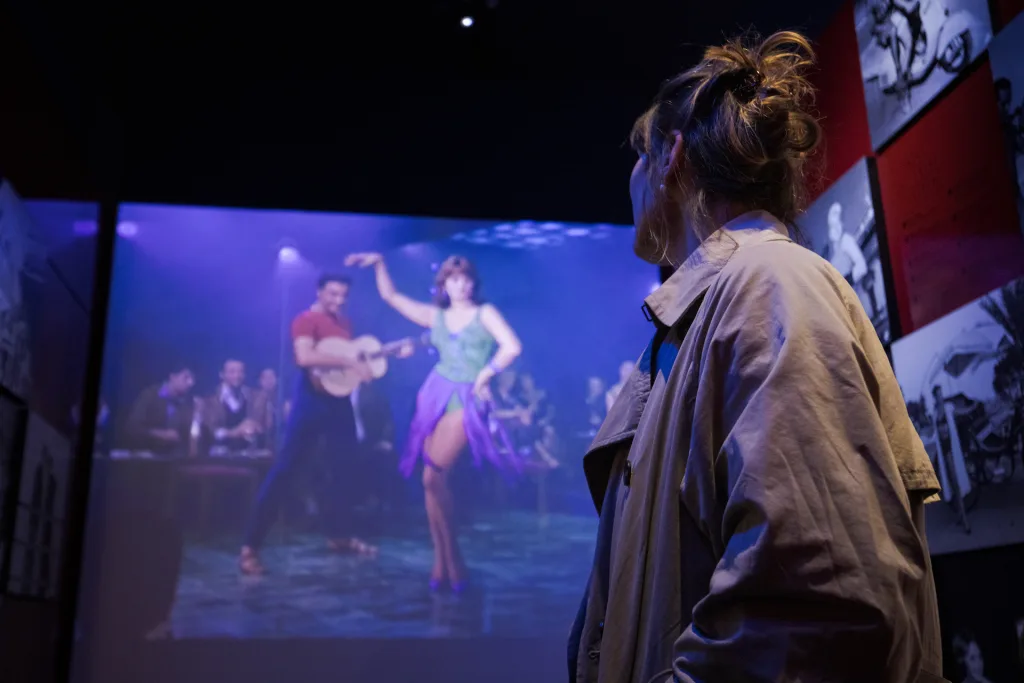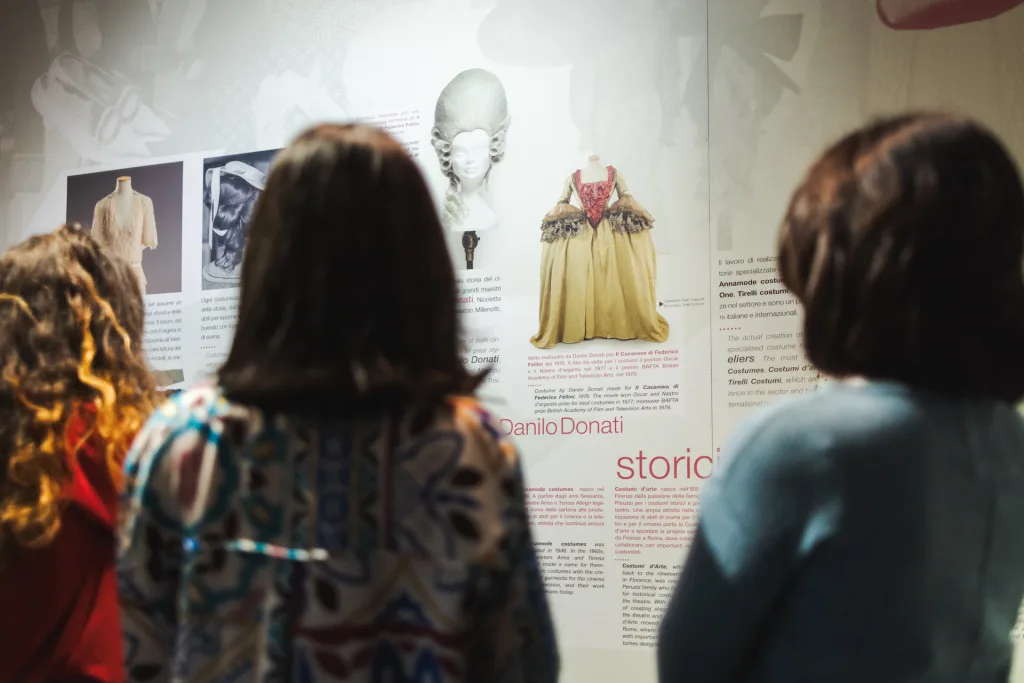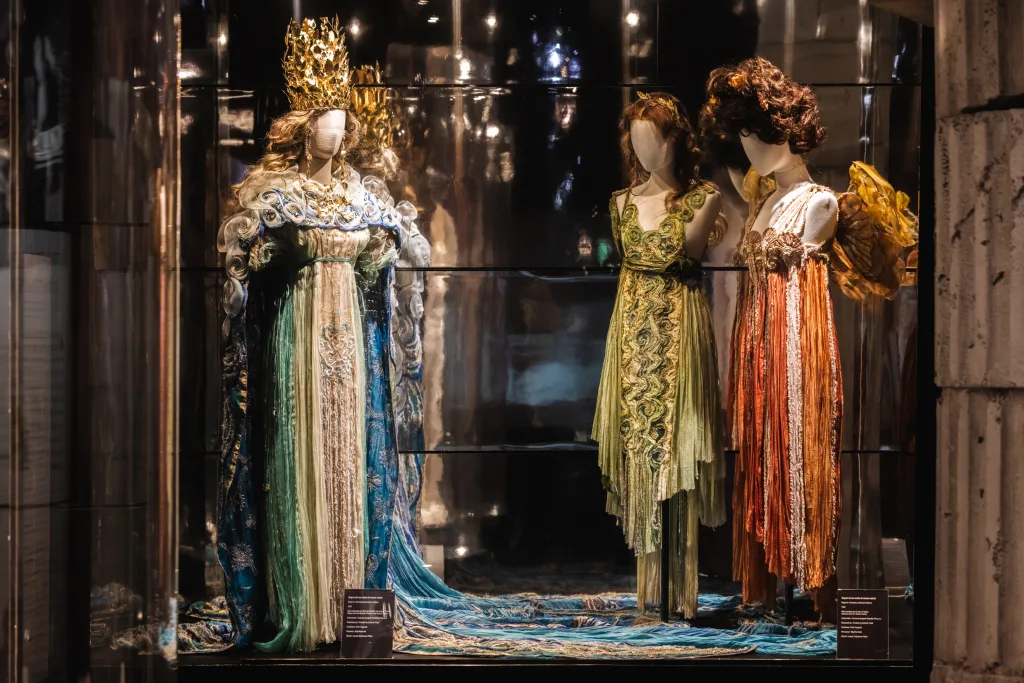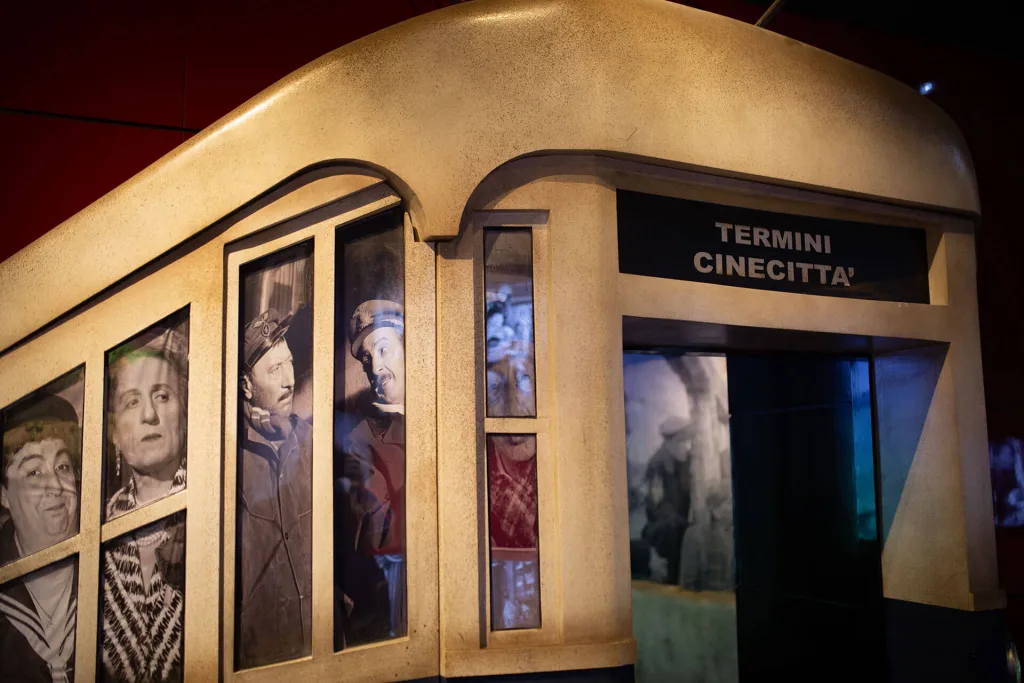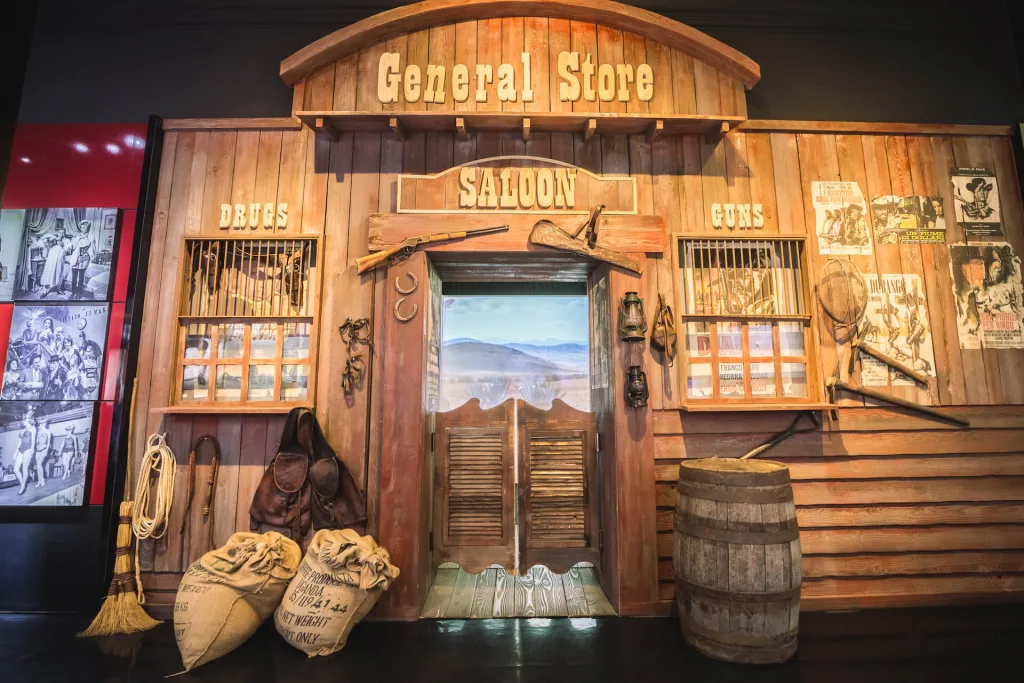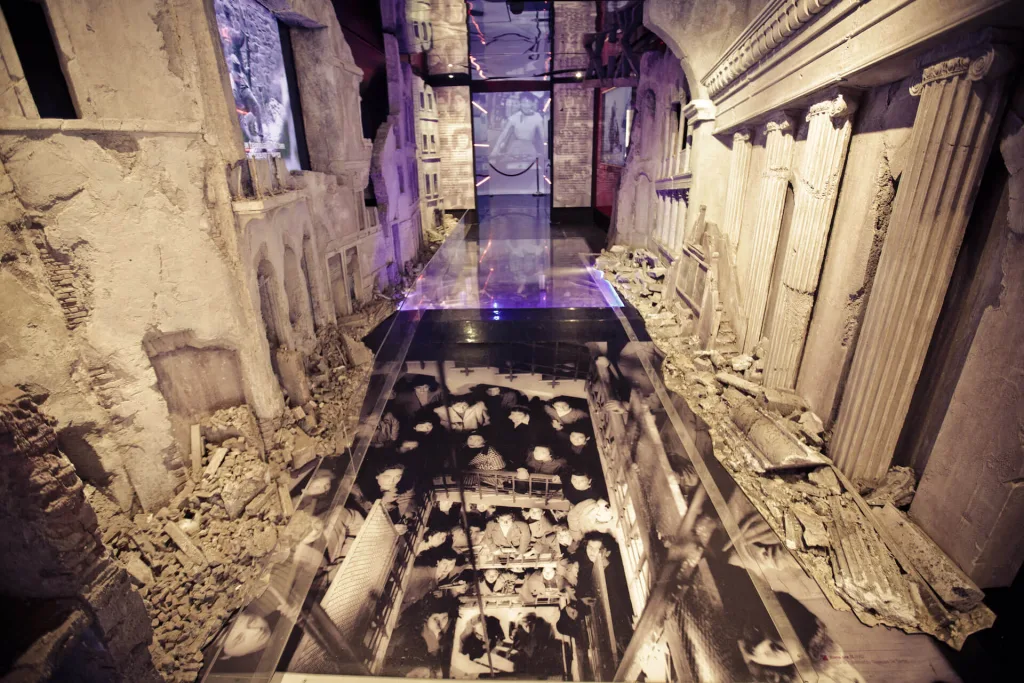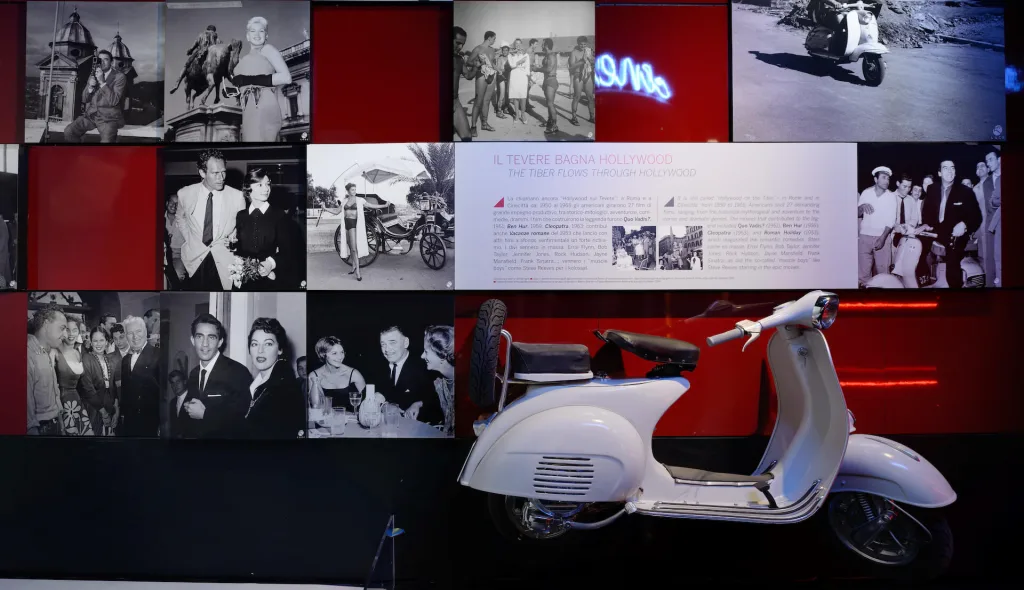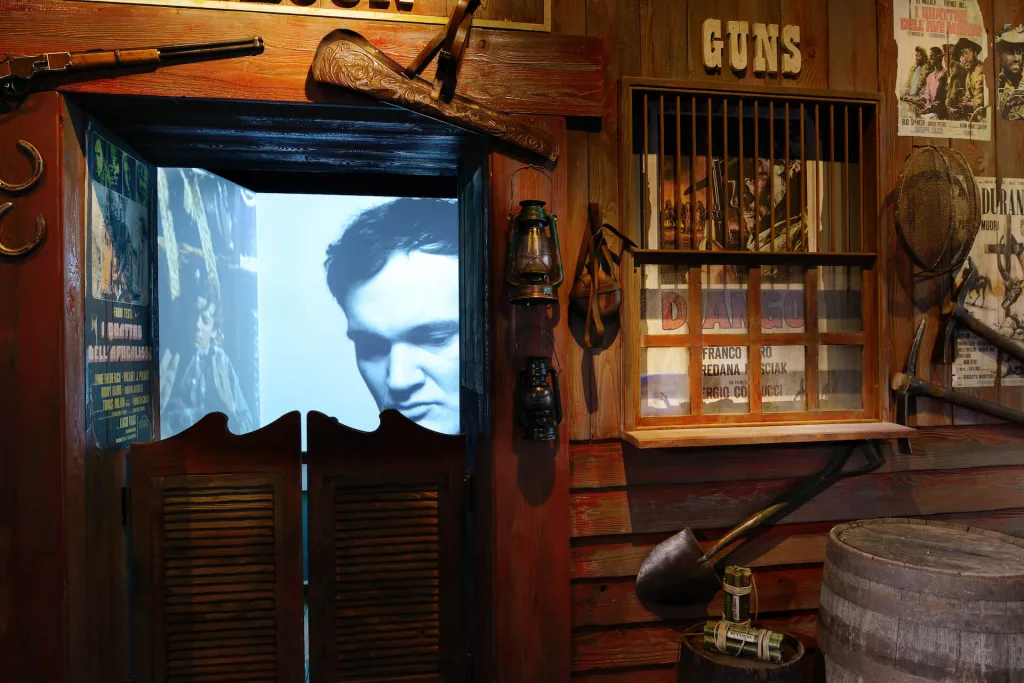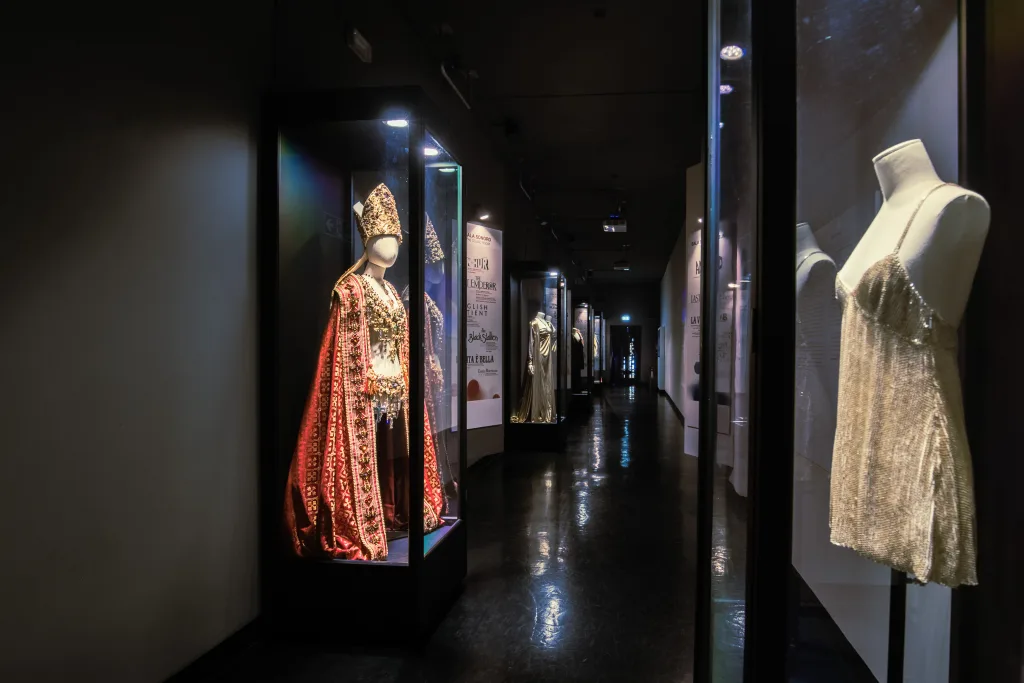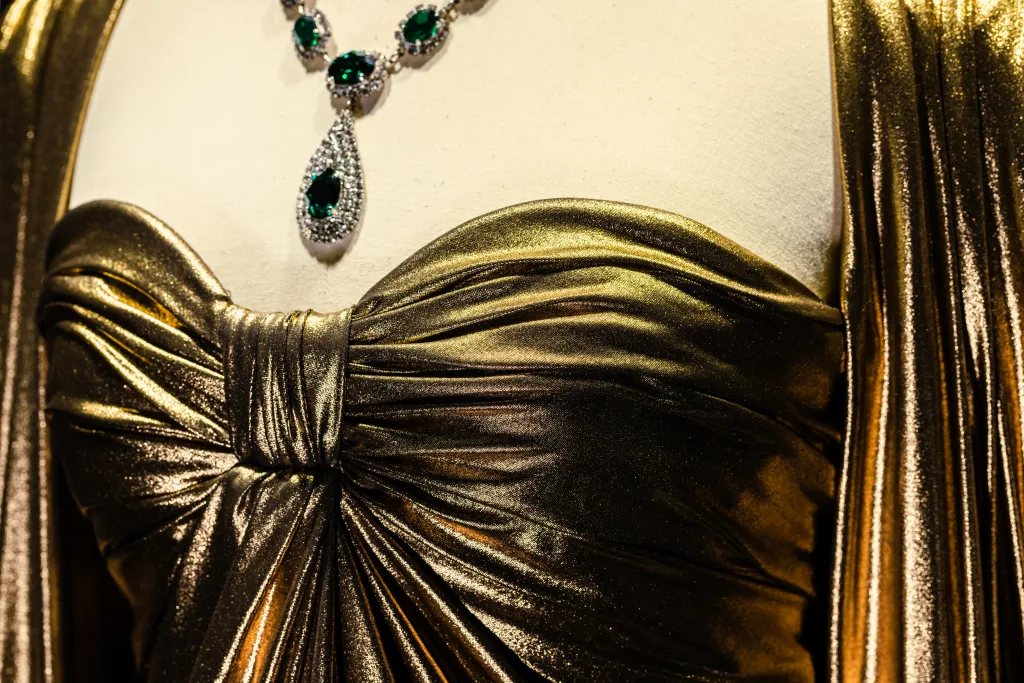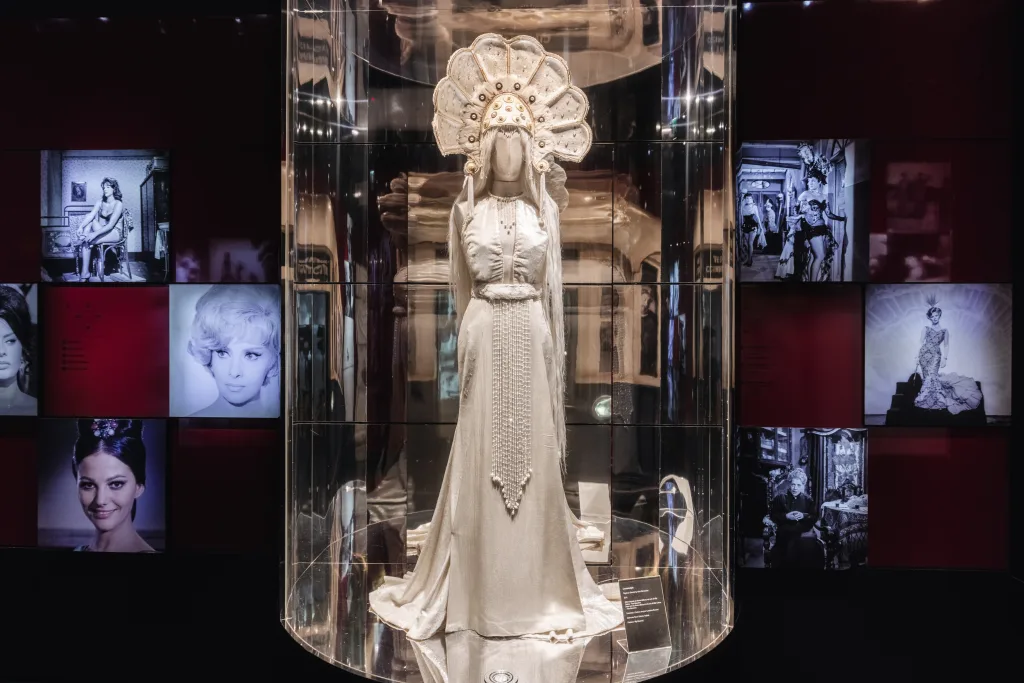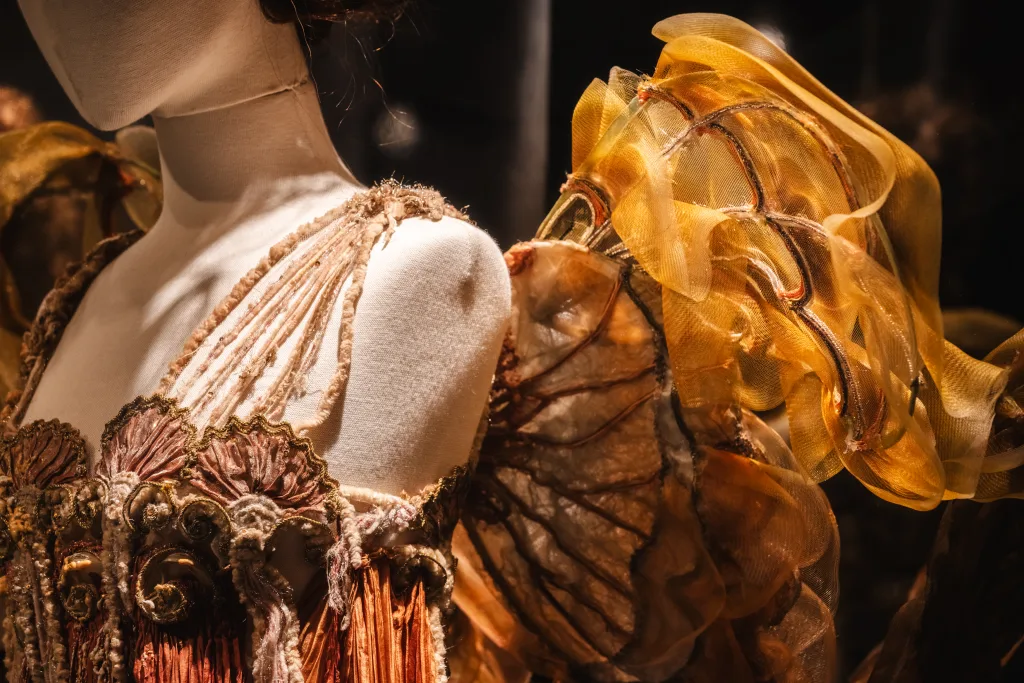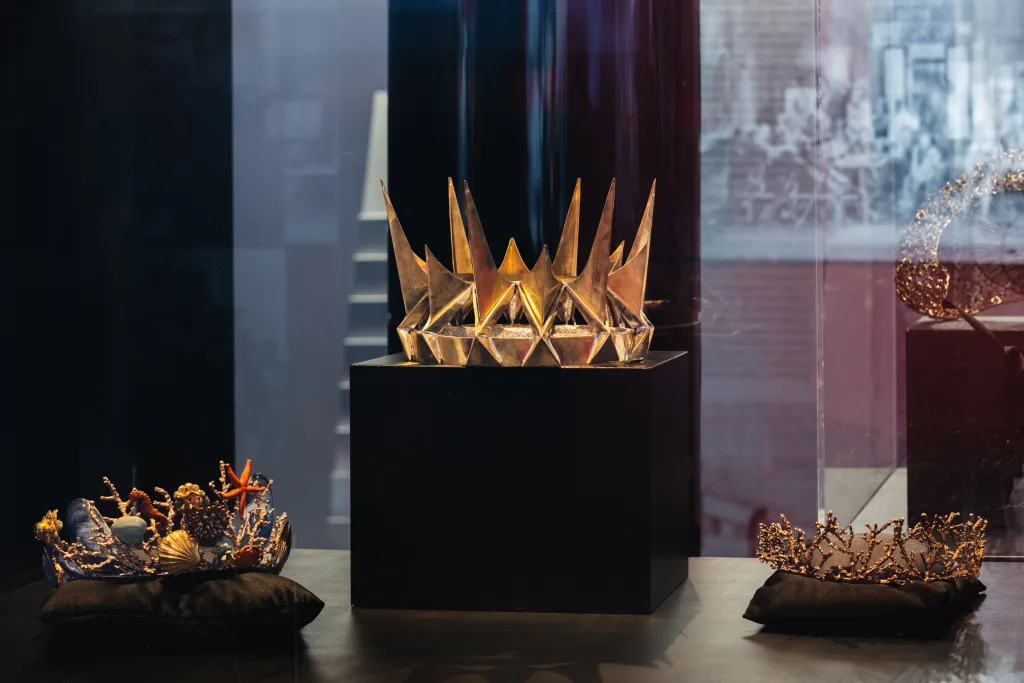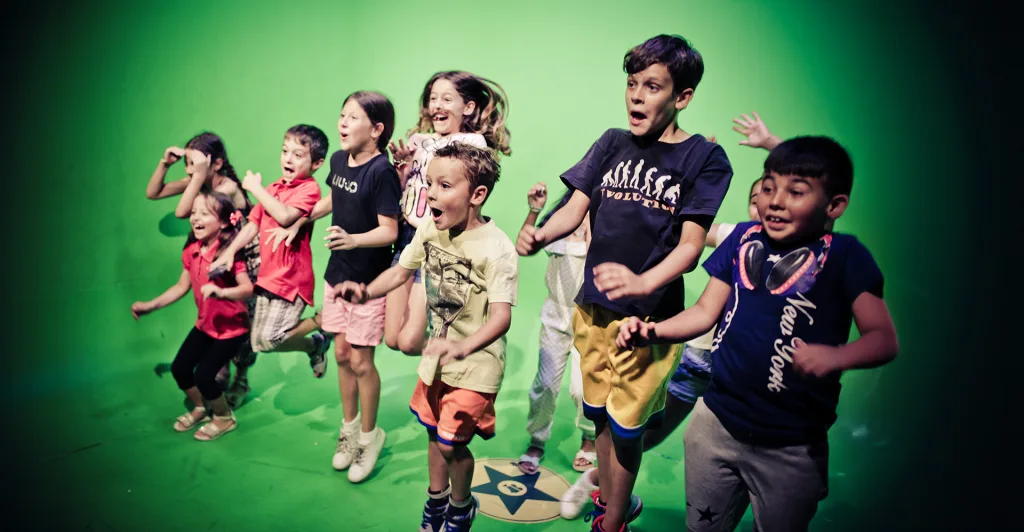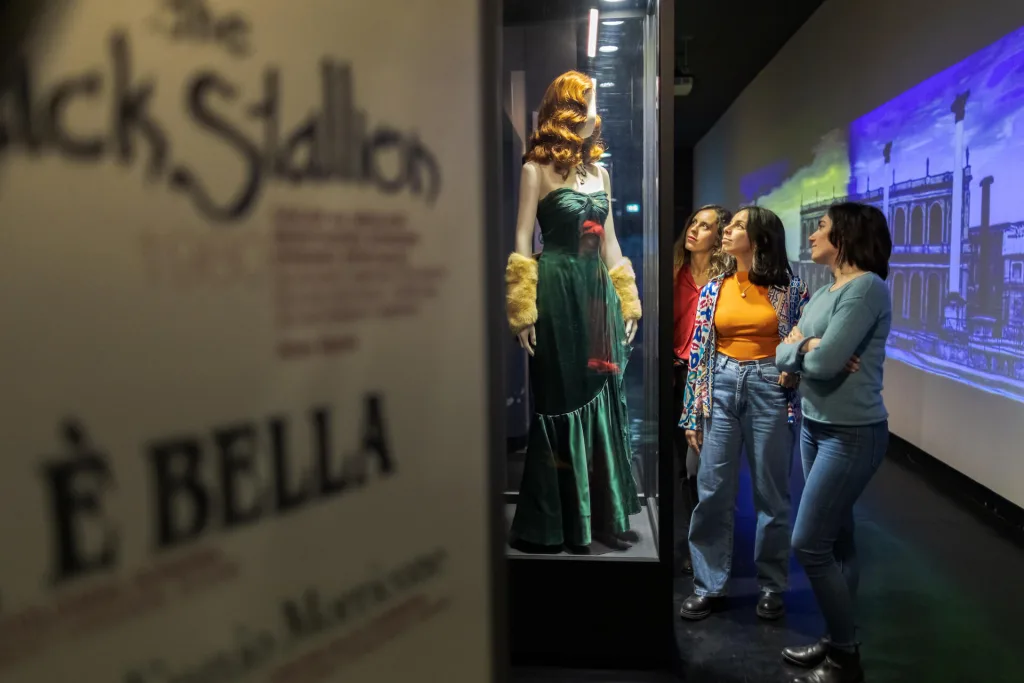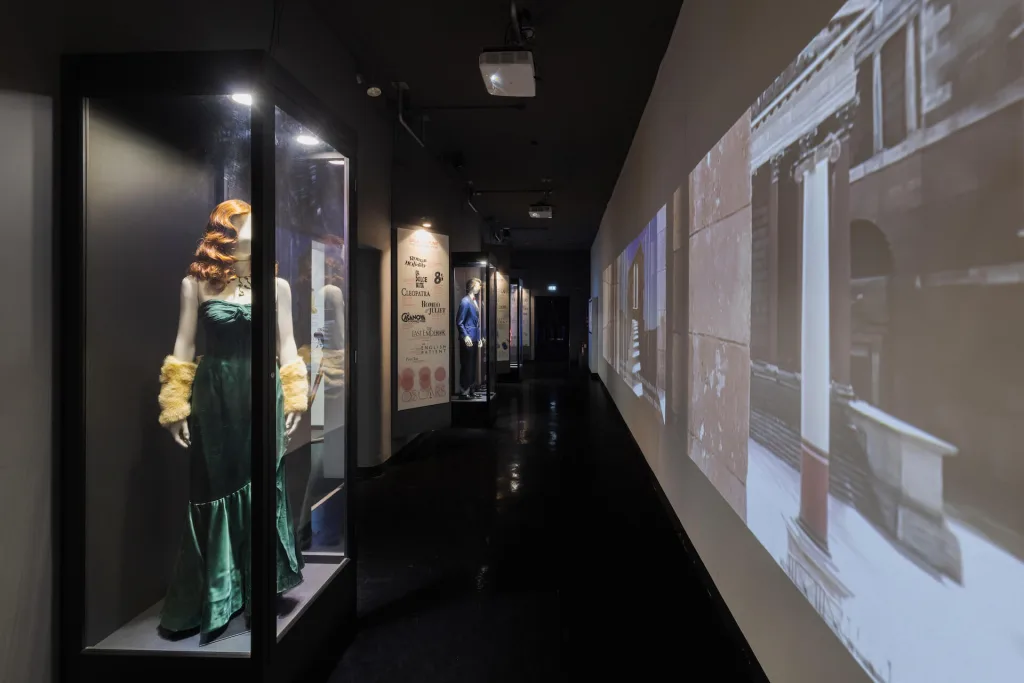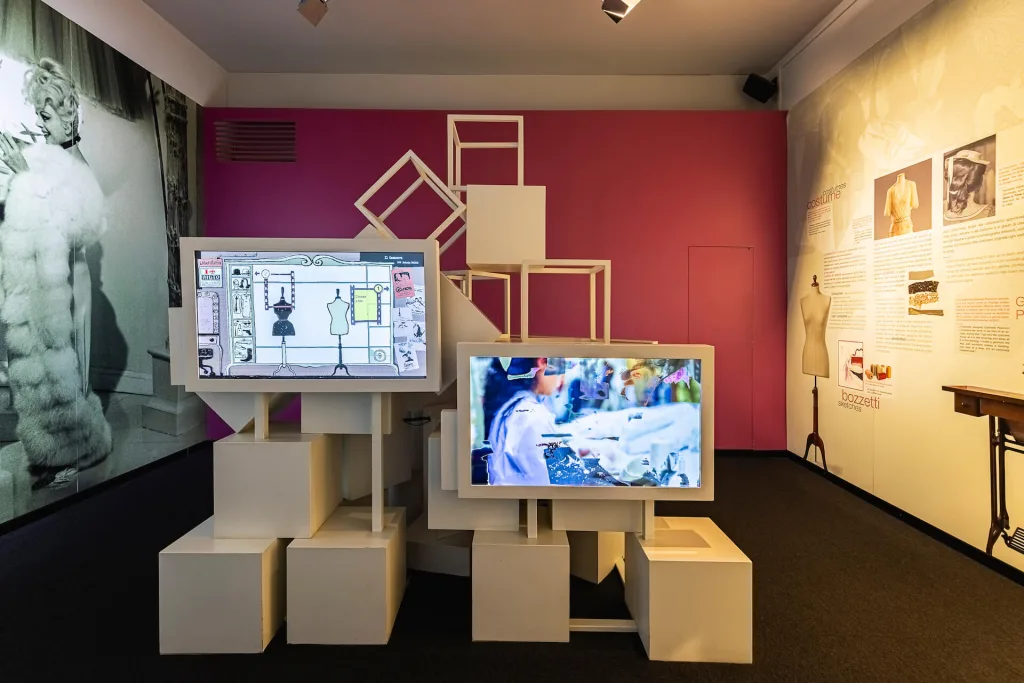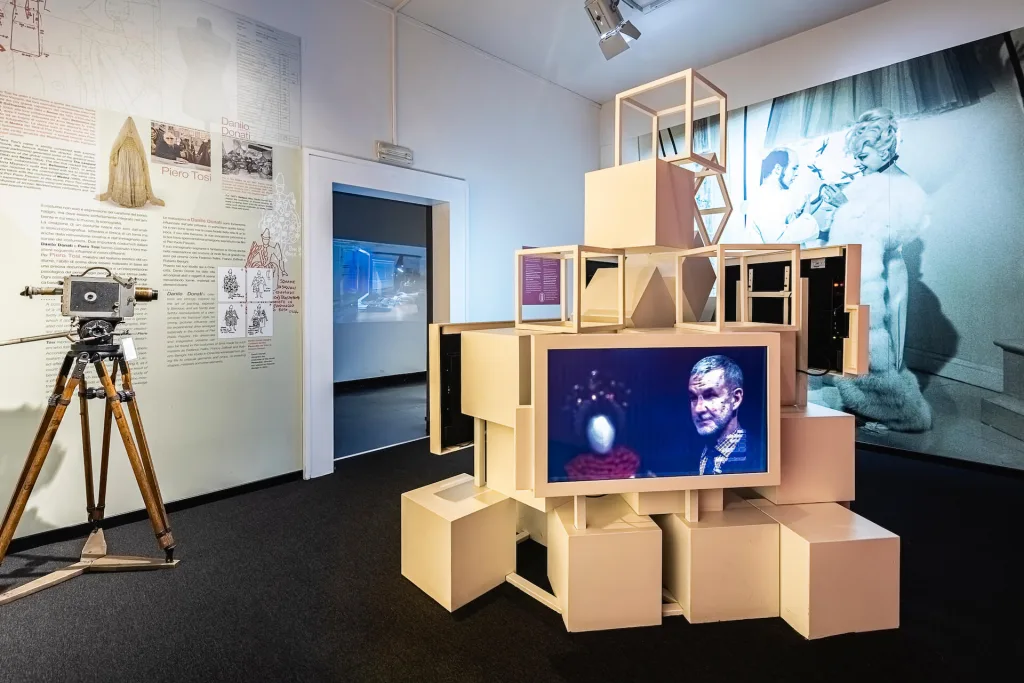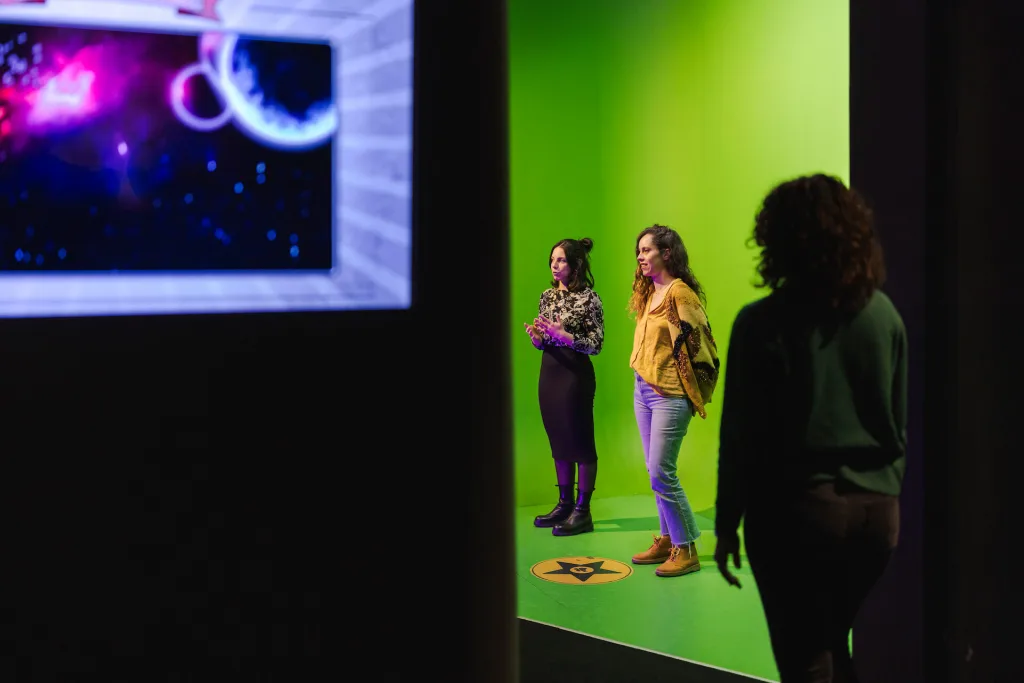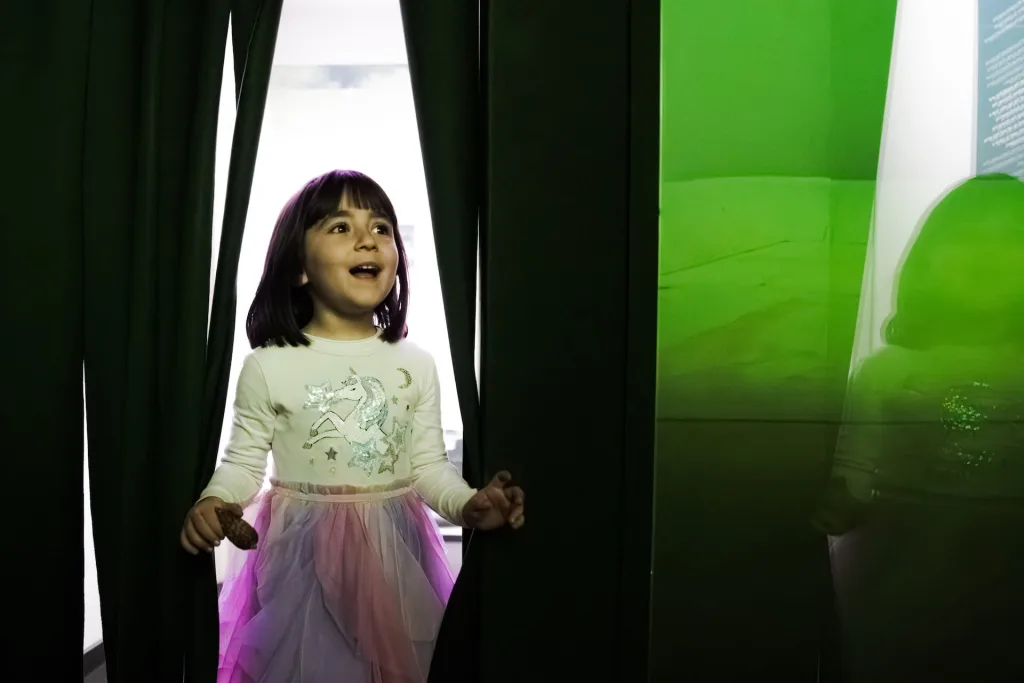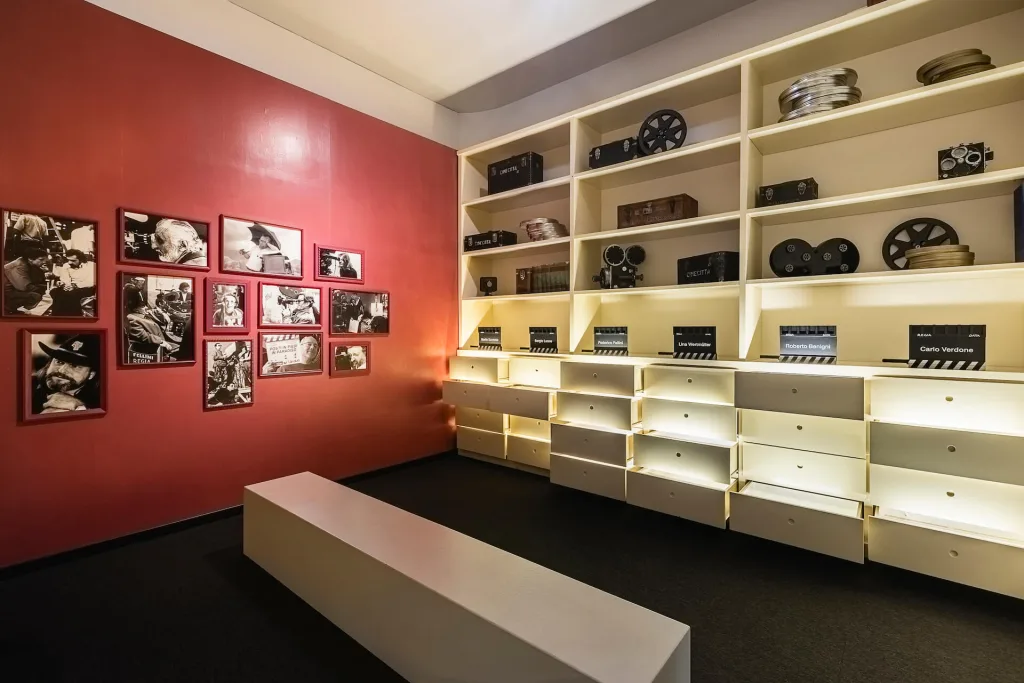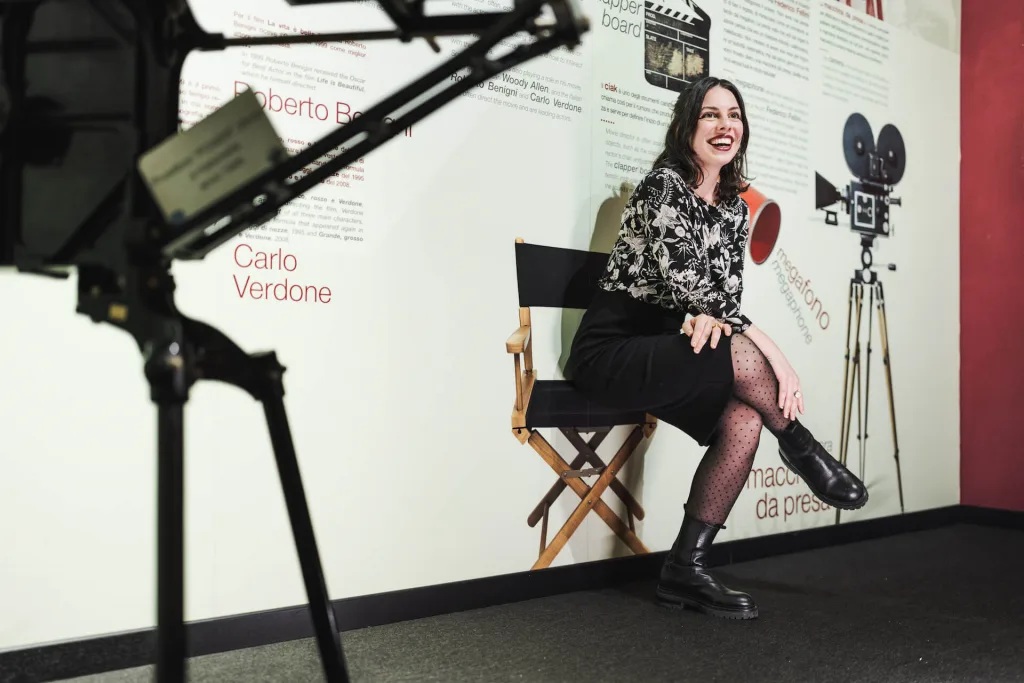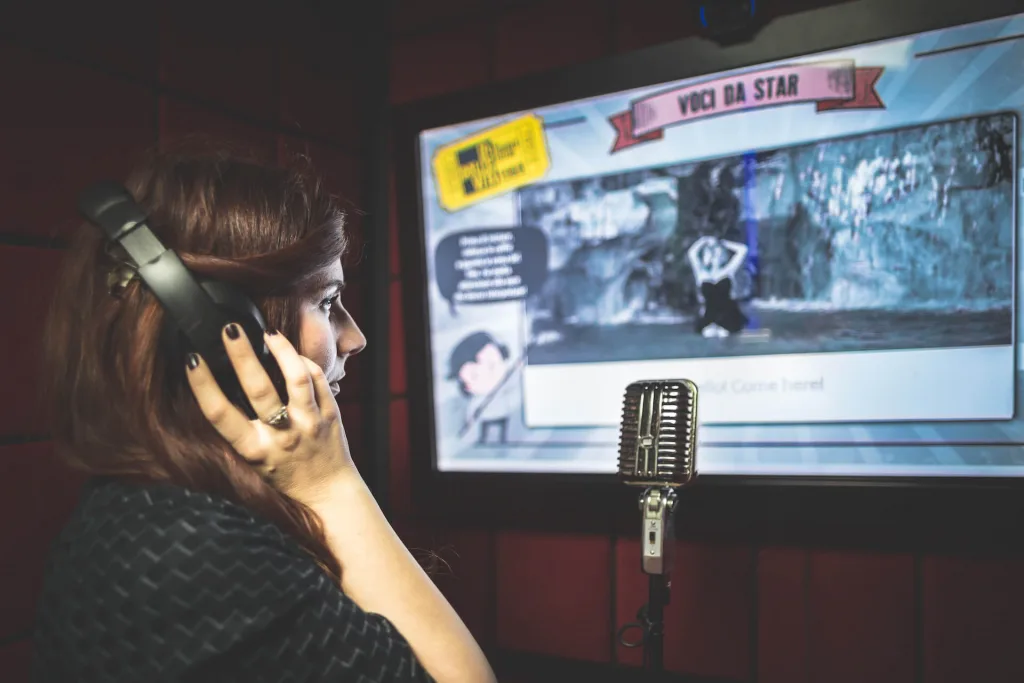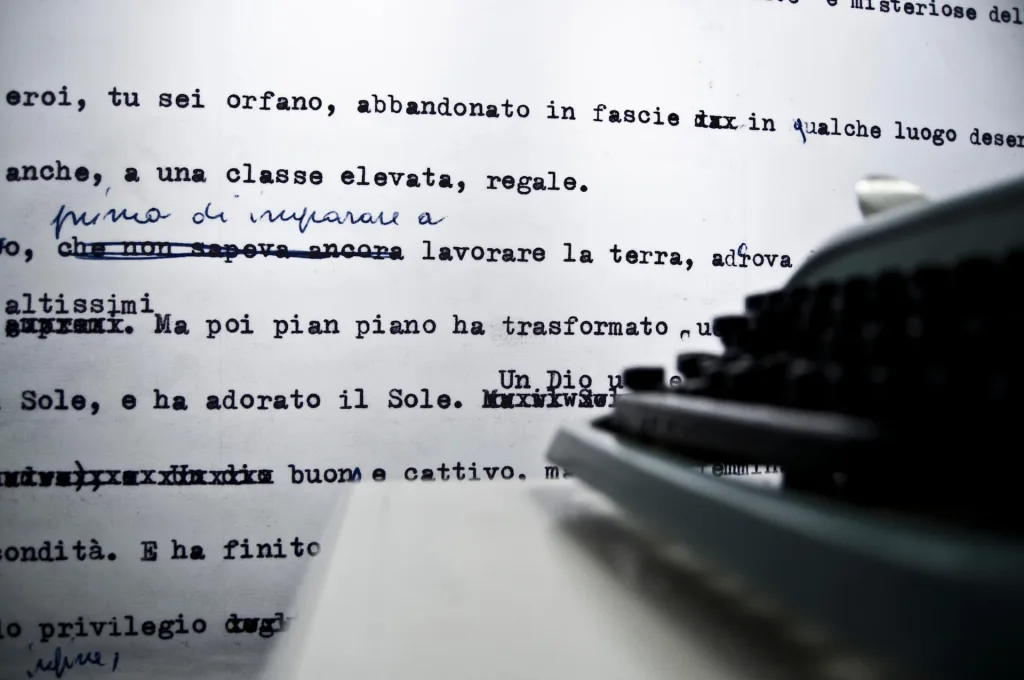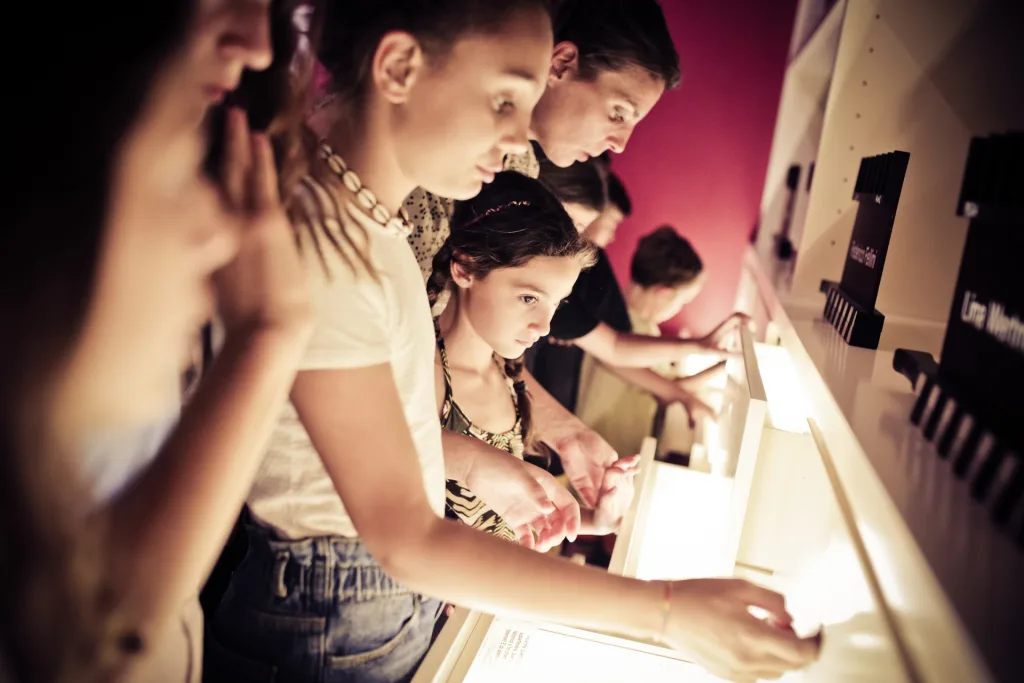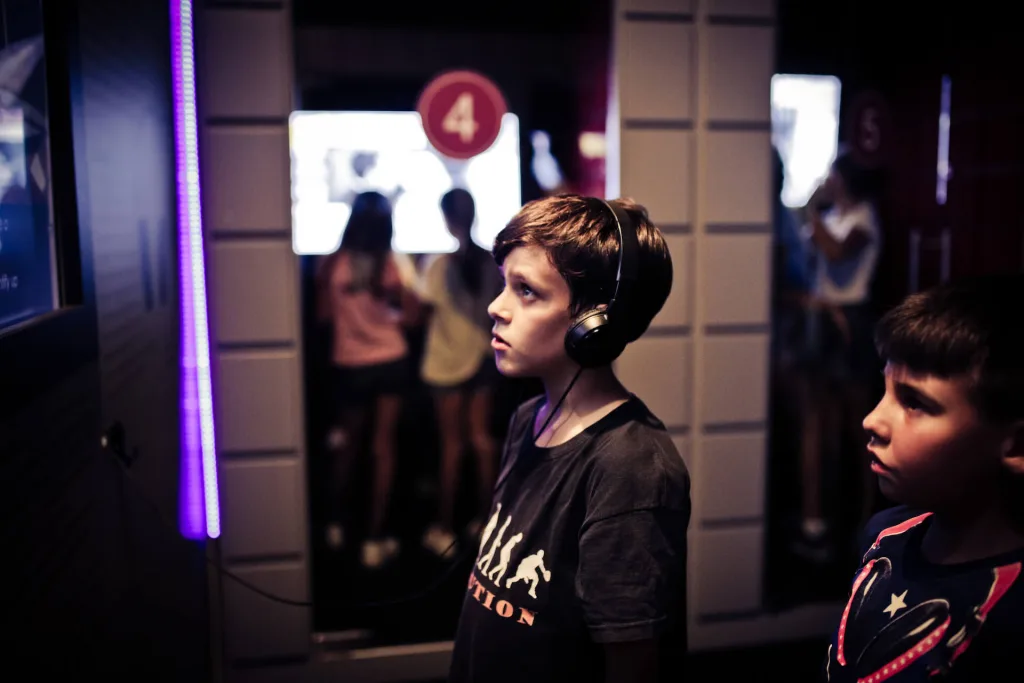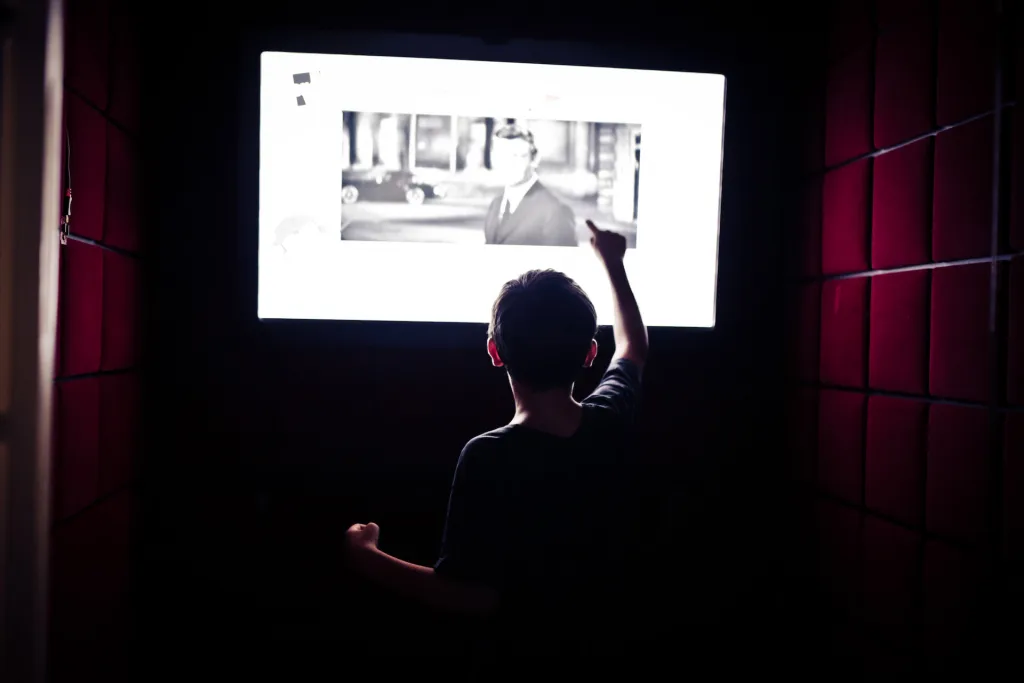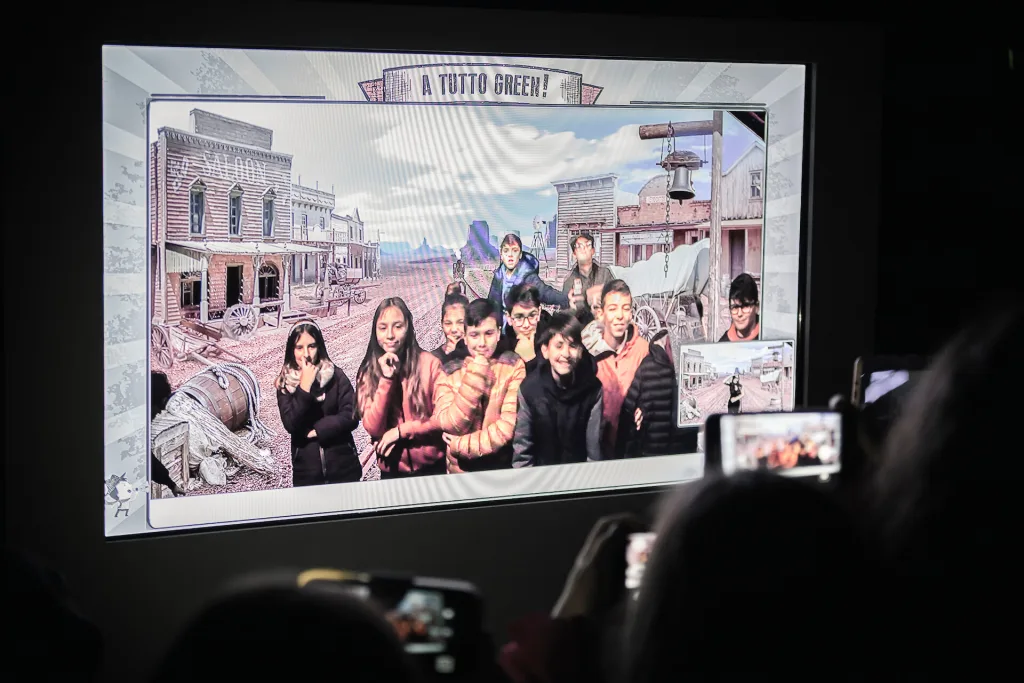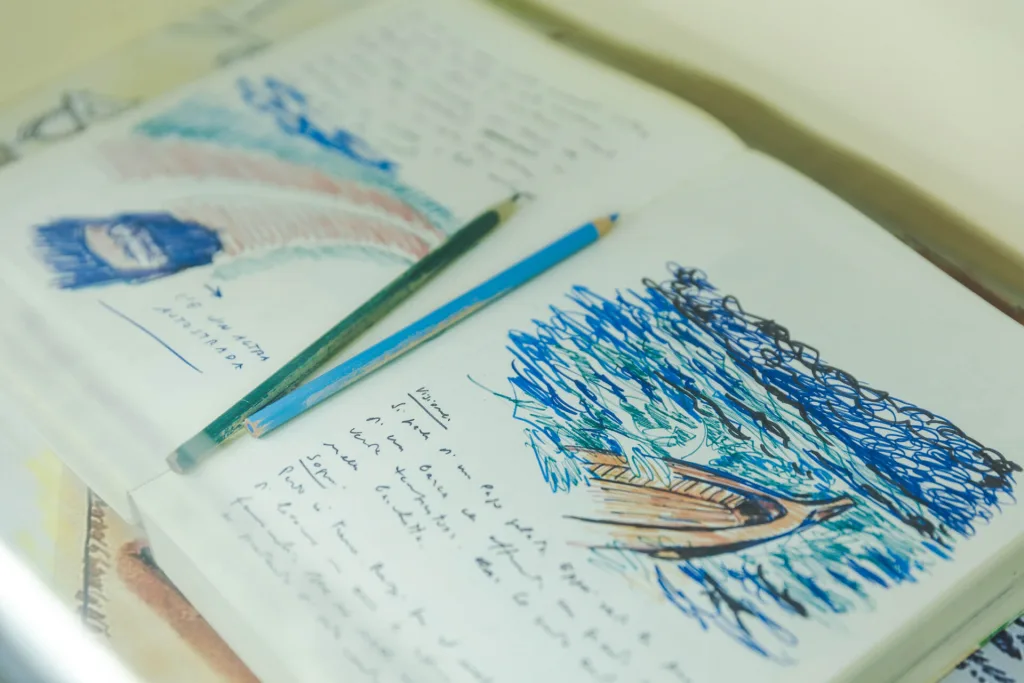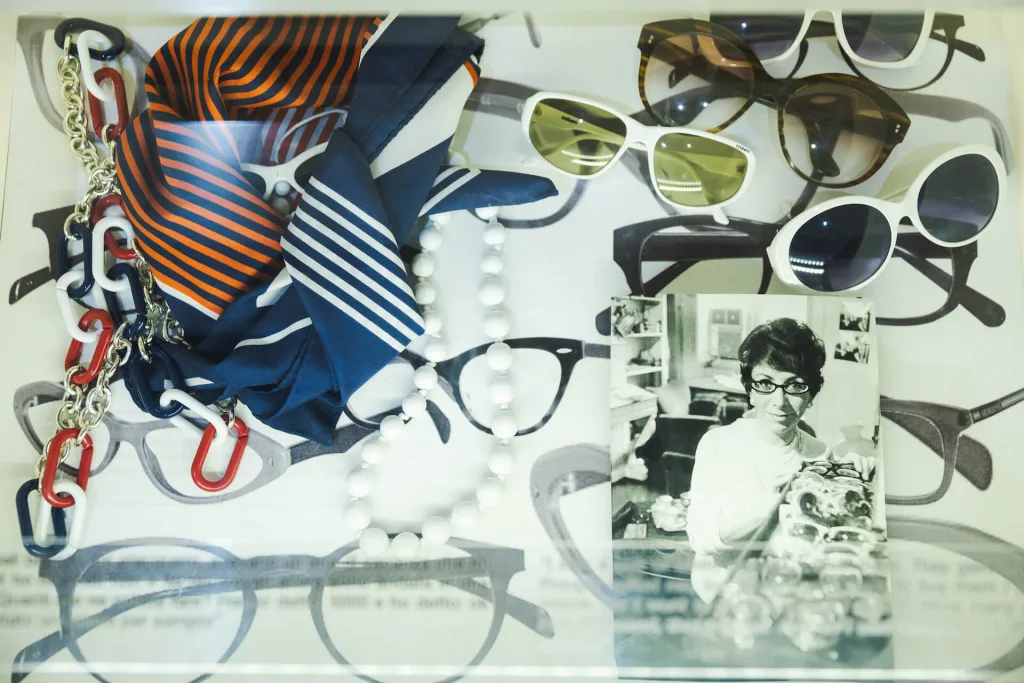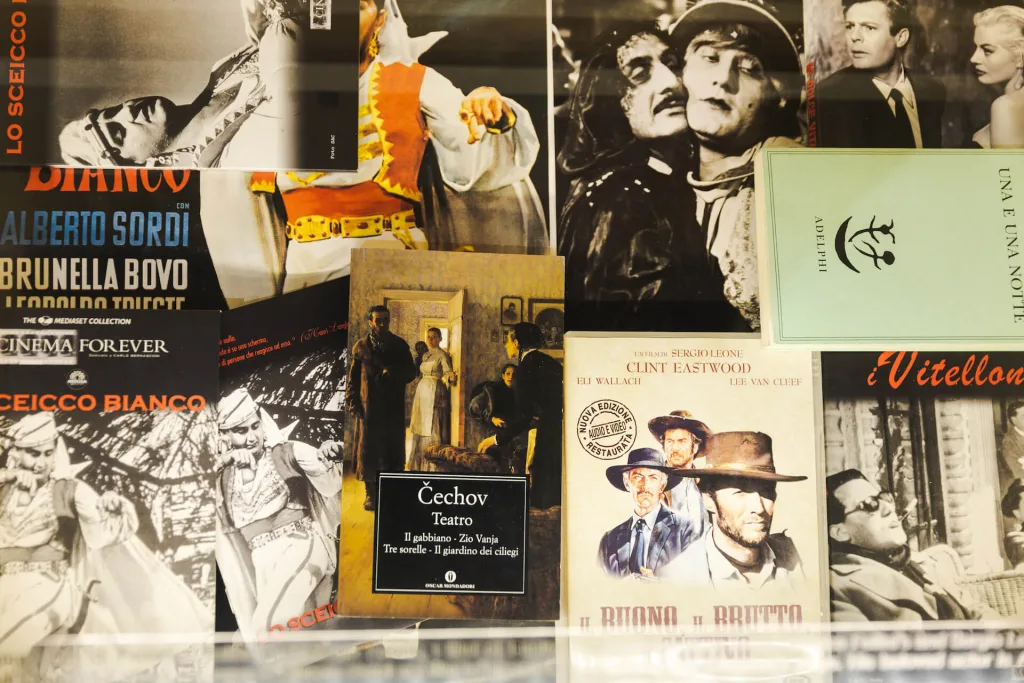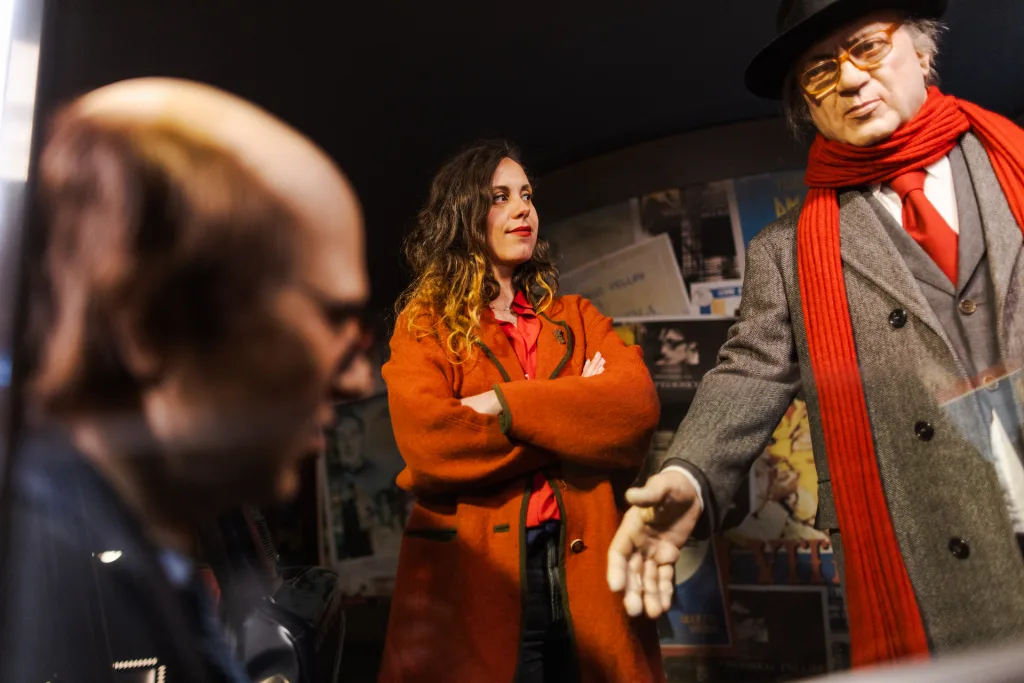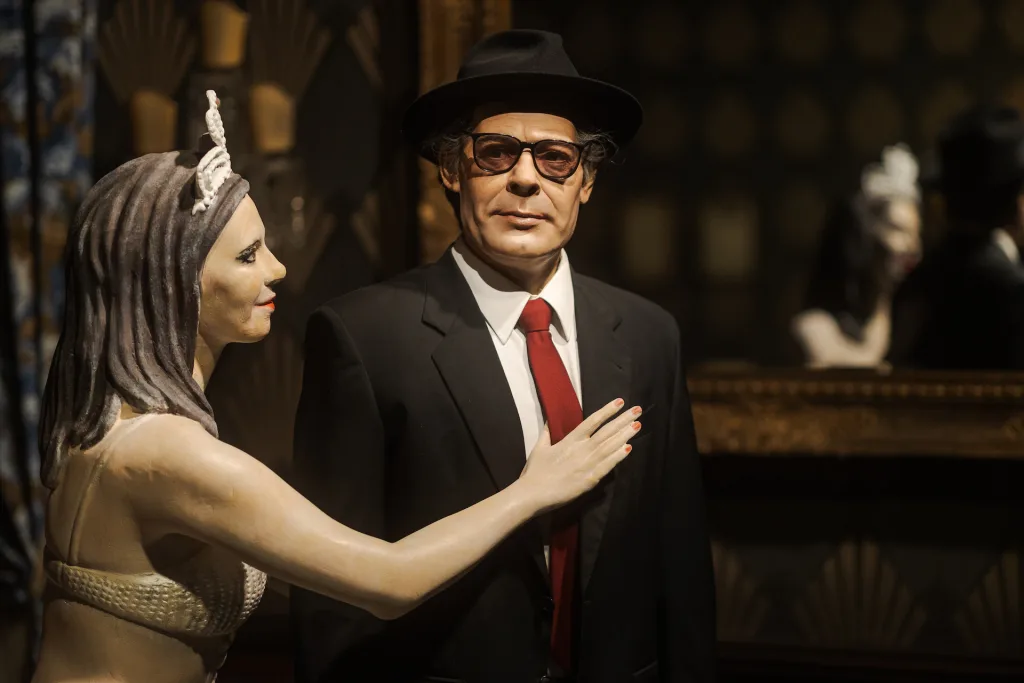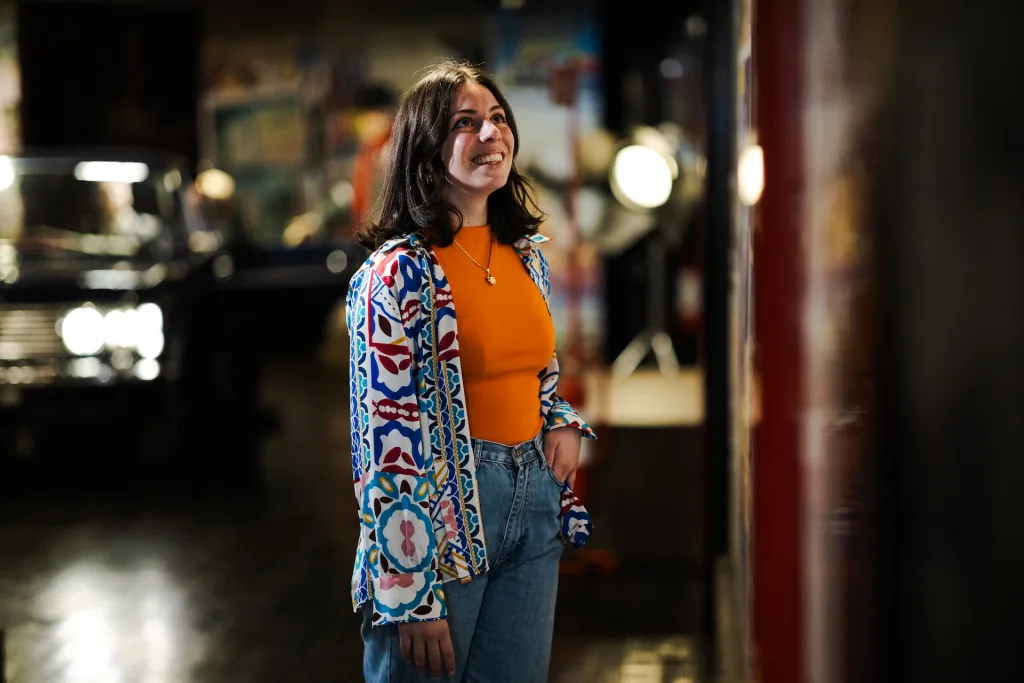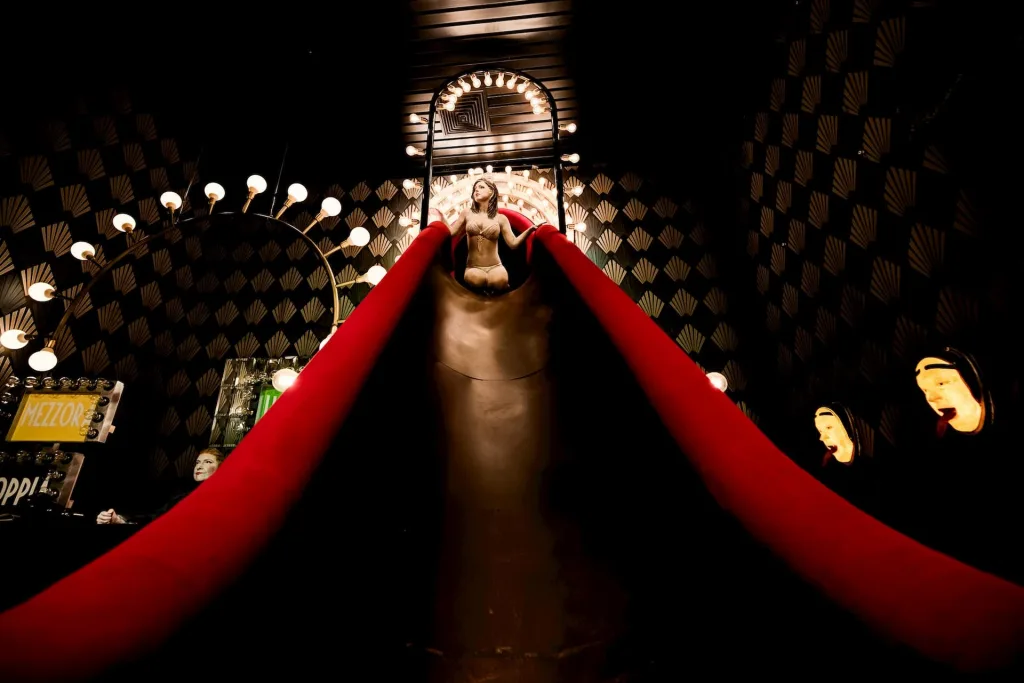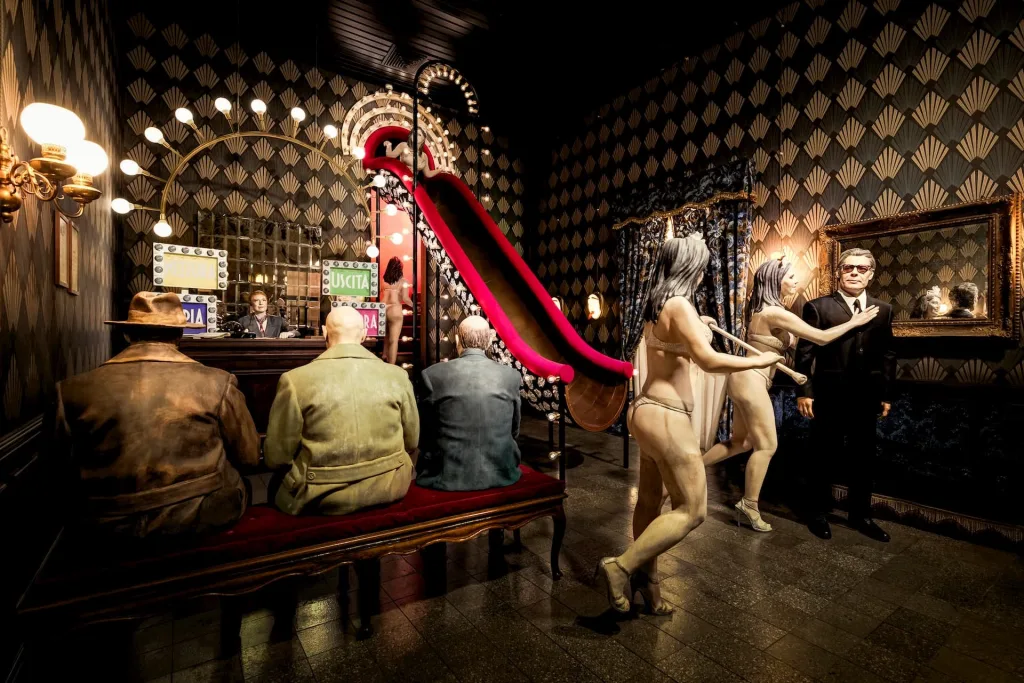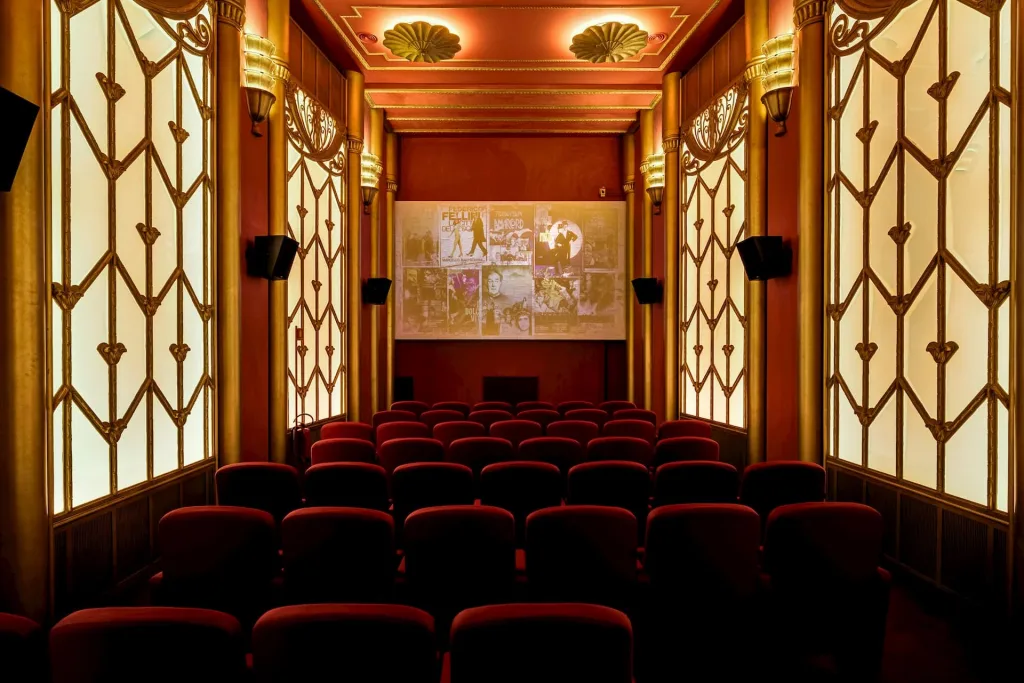Your Cinecittà experience begins at the storied Rationalist style entrance of Via Tuscolana 1055 and continues in the gardens which feature the huge, mysterious head of Venusia, a scenic element created by Giantito Burchiellaro for Fellini’s Casanova (1976).
The exhibition routes of Cinecittà Shows Off unfold inside the Palazzina Presidenziale and the Palazzina Fellini, two of the buildings included in Gino Peressutti’s original plan, and interactively display the history of the Studios, of cinema in Italy and the world, and professions in cinema.
![]()
FIRST ROUTE
SHOOTING IN CINECITTÀ
A set in the Palazzina Presidenziale offers visitors a deep dive into the history of great movies and film genres to discover stories and fun facts through a curated selection of images, videos, interviews and original costumes worn by Italian and international actors and actresses.
The costumes, accessories and props have been kindly loaned by leading costumiers and scenic warehouses including: E. Rancati, Sartoria Tirelli – Collezione Tirelli Trappetti; Costumi d’Arte Peruzzi, Sartoria Farani, Sartoria Il Costume, Sartoria Cineteatrale Nori, theOne, Pikkio, Rocchetti, Fenice Calzature.
The first scenic setup depicts the rubble of Rome after it was bombed and links the sections dedicated to historical films and propaganda to that of Neorealism, and opens onto the area dedicated to the International cinema of Hollywood on the Tiber, with tributes to such movies as Roman Holiday, Ben-Hur and Cleopatra.
The display route continues on to the Sala della Commedia, a tribute to Pasolini and a room dedicated to Sergio Leone where clips from his masterpieces are projected in a space whose look is inspired by Once Upon a Time in America.
![]()
SECOND ROUTE
BACKSTAGE – AN EDUCATIONAL ROUTE THROUGH CINECITTÀ
Backstage – An Educational Route Trough Cinecittà. This is the second route, which offers a glimpse into the various cinema trades, with six rooms dedicated to film direction, screenwriting, sound editing, costumes and visual effects.
The Director’s Room is recreated as an art-house studio where the public is inspired to discover the imaginative talent of six prominent directors, from Lina Wertmüller to Martin Scorsese, through their books, objects, photographs and personal items.
The Script Room presents the process of transposing words into moving pictures, and displays excerpts of screenplays, storyboards and film sequences.
The Sound Room unveils fun facts and anecdotes about the transition from silent films to sound films and lets visitors play with the dubbing process.
The Costume Room allows its visitors to virtually construct a costume, matching garments, accessories and wigs based on well-known movies.
The Fiction Room goes behind the scenes of cinematic fiction through words, images, videos, early special effects, set reconstructions at Cinecittà and the make-up effects that can completely transform the face of an actor.
The Green Screen Room introduces one of the best-known effects of contemporary cinema: The Green Screen, the digital chroma key technology which sets people and objects against a virtual background.
The exhibition route is further enriched by a temporary display of costumes from Federico Fellini’s films The Clowns, 1970 and Federico Fellini’s Casanova, 1976 that celebrate the fascinating characters created by the director.
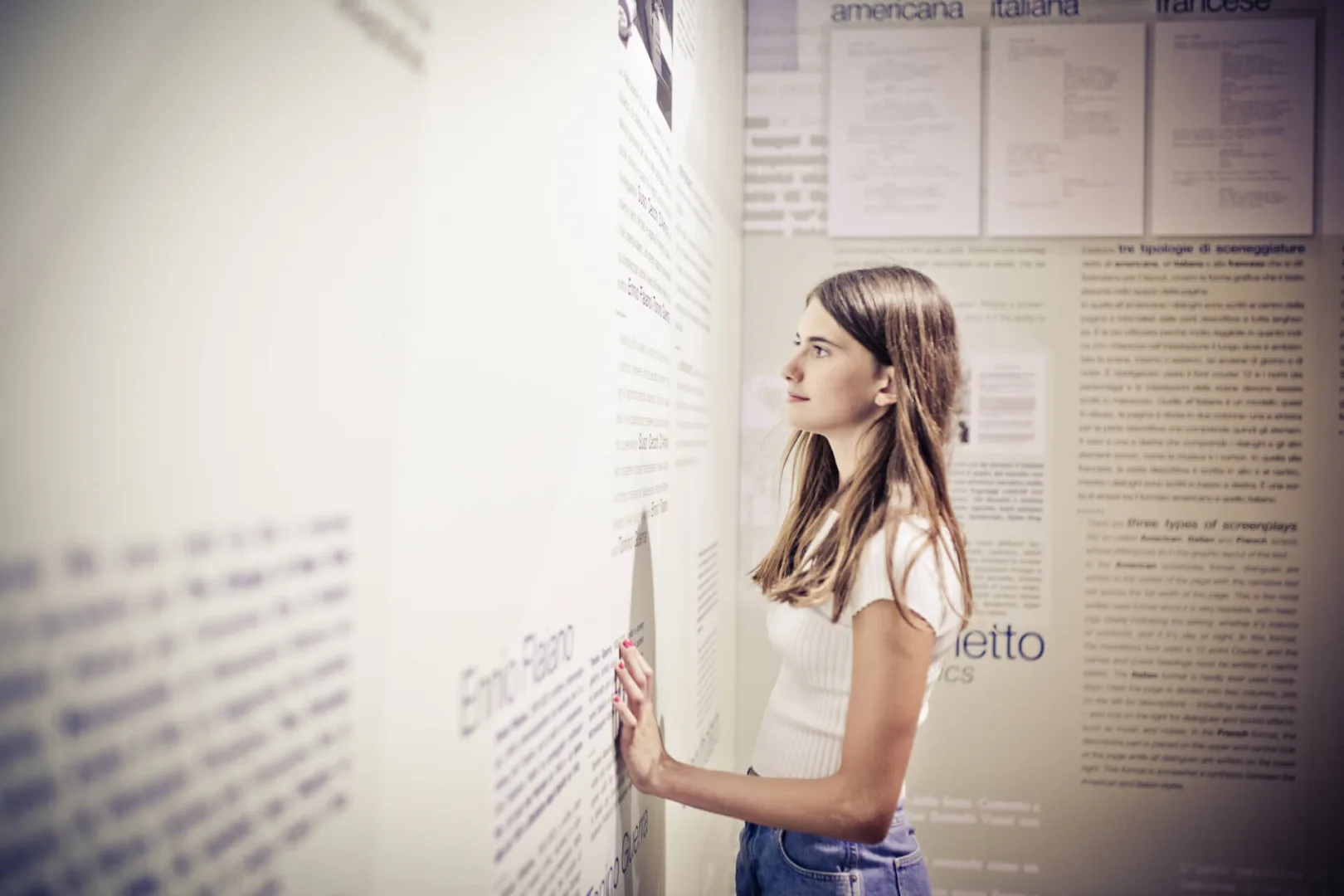
![]()
THIRD ROUTE
SUBMARINE S-33
The exhibition path leads to the set of the American submarine S-33 made for the film U-571, directed by Jonathan Mostow, whose underwater scenes were shot inside Teatro 5.The film narrates an event of World War II when, in April 1942, the American Navy attempted to capture the German submarine U-571 carrying the Engima decoder, able to locate Nazi U-boats.
The path ends outside the LED gallery, which offers a full perspective on Cinecittà Studios through the numbers that made the Studios such a legendary place over the 80 years of its history.
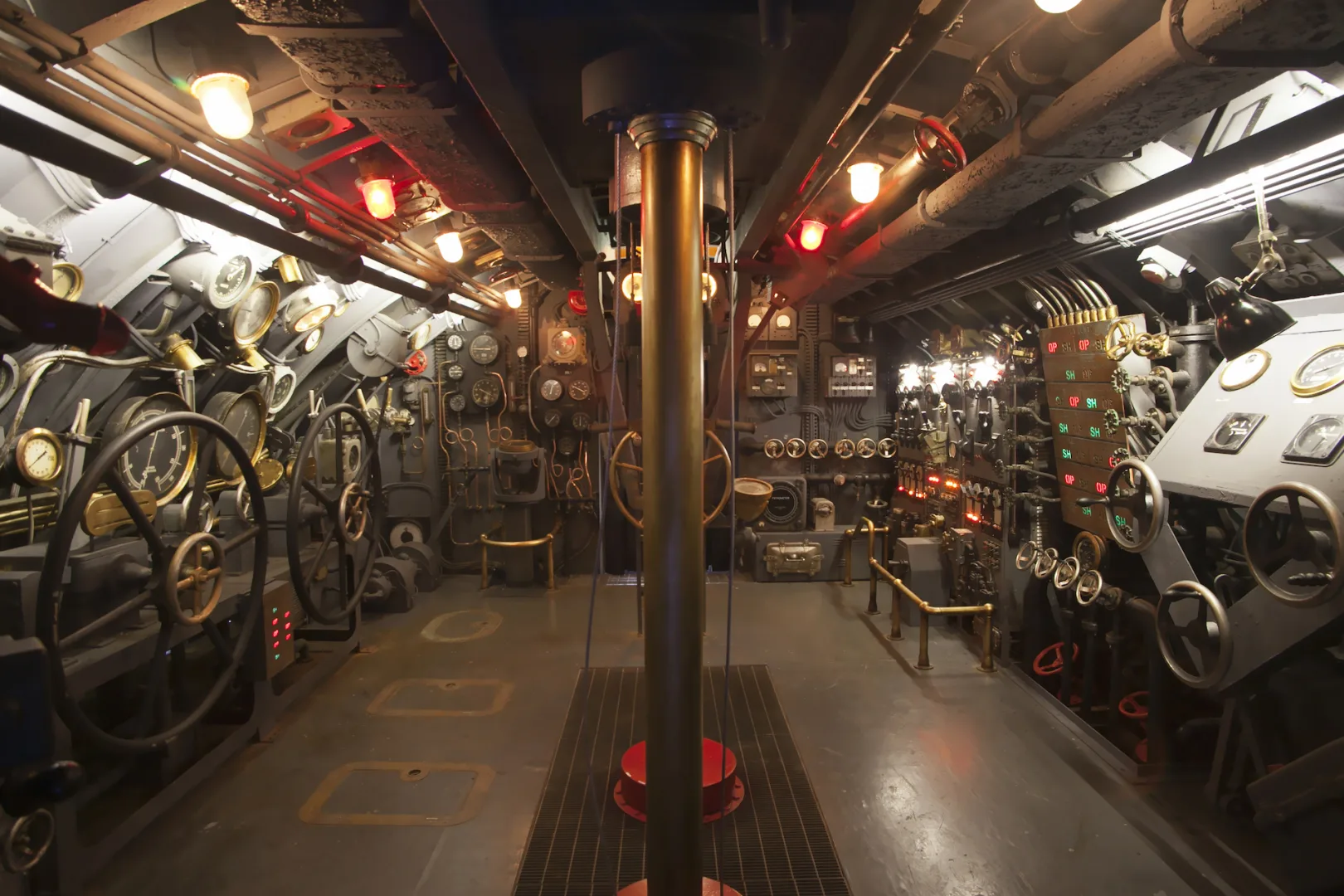
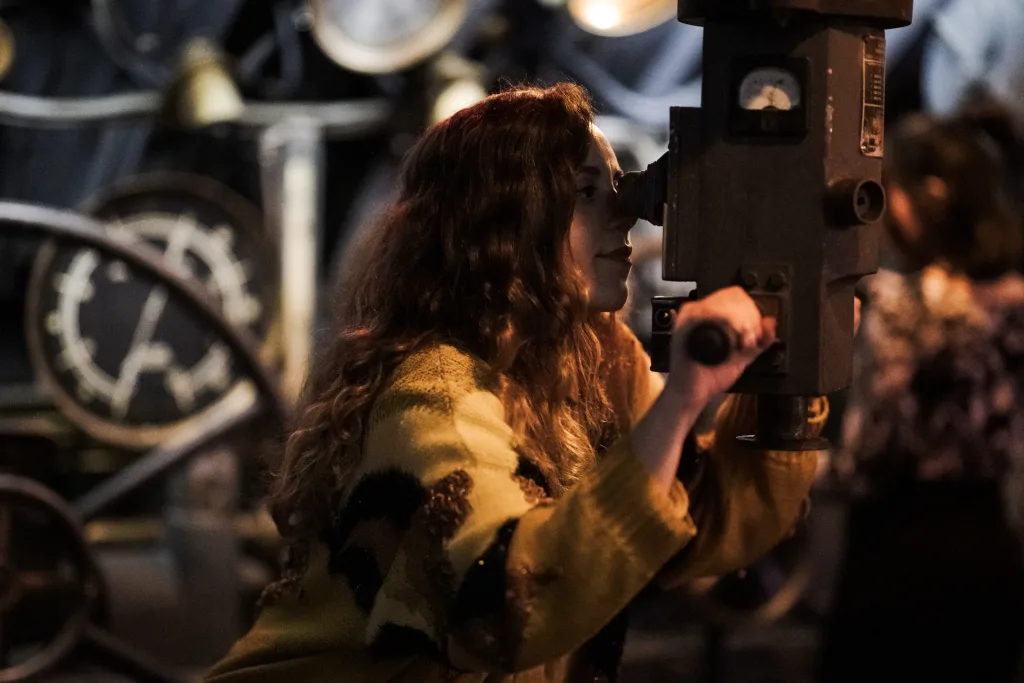
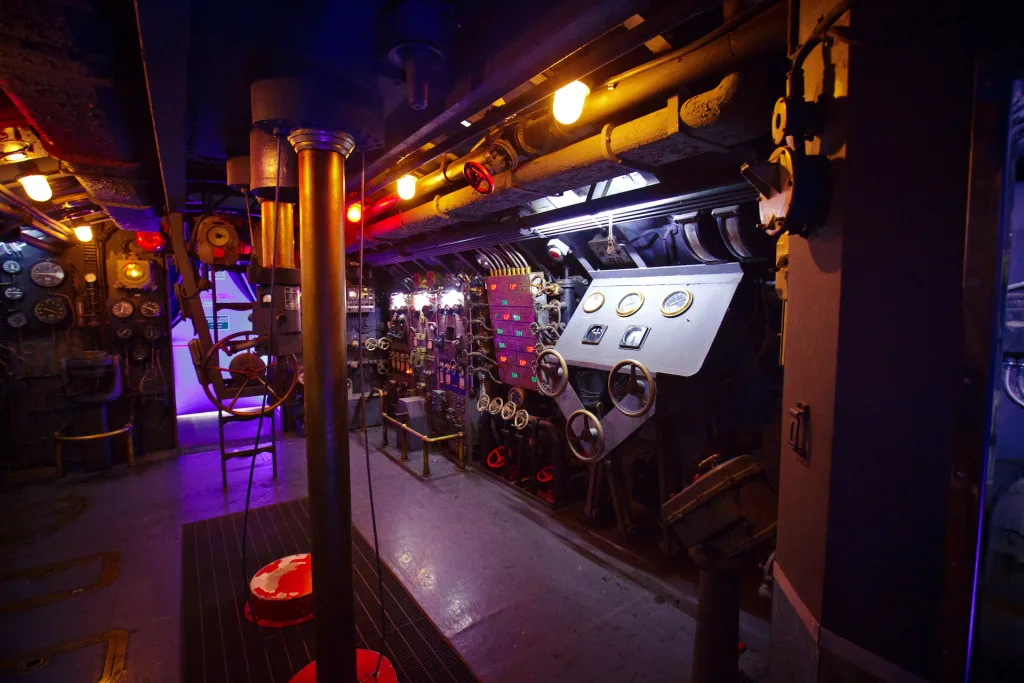
![]()
FOURTH ROUTE
FELLINIANA – FERRETTI DREAMS FELLINI
FELLINIANA- Ferretti dreams Fellini, the fourth and newest permanent exhibition route, was created by Dante Ferretti, the Academy Award® winning production designer who was one of the magical architects of Federico Fellini’s visions, an artist-artisan able to materialize dreams, and Francesca Lo Schiavo, the Academy Award® winning set designer and decorator.
The exhibition-installation, displayed in the famous Palazzina Fellini, offers an immersive dive into a world inspired by Fellini’s imagination, creating a little city inside Cinecittà, a physical and dreamlike space whose concentrated pathway evokes a Renaissance cabinet of curiosities containing places, signs, and representations of the entire Fellini universe.
The exhibition-installation unfolds across three main areas. In the central room, decorated with film posters, a vintage Fiat 125 is a symbol of the frequent travels made by Fellini and Ferretti, the setting for conversations and the description of dreams. The pathway continues with the “Bordello”, an area which summarizes the fantasy world encapsulated in City of Women (La Città delle donne) and includes the film’s slide and soubrettes gathered around Marcello Mastroianni. It continues on to the last room which represents the Fulgor Cinema, a place of symbolic significance in Fellini’s childhood and the start of his relationship with film. The original in Rimini was restored recently by Dante Ferretti.
With an artist’s magical ability, Ferretti has created a new ideal home for Fellini in these three rooms: new custodians of the dreams that the Maestro shared with him.
